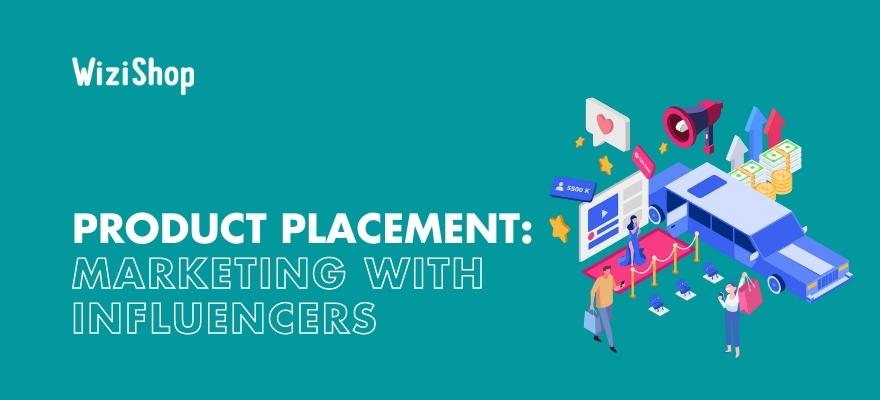You’re looking for visibility for your products.
And like any self-respecting connected person, you’ve heard about influencers and product placement on social networks.
The idea seems interesting. The potential is strong.
You ask around.
However, the concept is still unclear to you.
What’s product placement? Where do you start? Which influencer should you contact? How do you contact them? What kind of partnership should you offer them? How do you encourage them to talk about your products? How do you be sure to succeed in your advertising operation? These are all questions you may be asking yourself.
Don’t worry.
At the end of this article, how to collaborate with influencers and other bloggers, YouTubers, and Instagrammers won’t be a secret for you any longer!
And the time has come to get started with product placement and influencer marketing!
Here’s the ultimate guide to product placement on social networks with influencers.
What’s an influencer?
Before we get into the nitty-gritty of the topic and the strategy behind it, we need to define what an influencer is.
Influencer is a big word...and it’s used in many different ways.
First of all, do you know the difference between an influencer and an ambassador?
No?
It’s actually very simple.
An ambassador is a person who knows your brand or your online store and loves it so much that they recommend it to those around them with great pleasure. They don’t necessarily have a big community. This is limited to their entourage, their relatives, etc.
However, they’ll still bring you qualified prospects because they’ll have spoken highly of your brand beforehand. Furthermore, their network knows and trusts them. Thus, the new visitor is already going to be convinced of the quality of your products and/or services.
And you know what they say? As soon as you find your ambassadors, it’s the ultimate in customer relations. And you have to pamper them!
But that’s not the point...
An influencer doesn’t necessarily know your brand, but they have a large community and therefore a certain power of influence in a specific sector: fashion, beauty, sports, cars, high tech, gaming…

They have thousands, tens of thousands, hundreds of thousands, or even millions of people who follow them and who are inspired by what they post for their own lifestyle, their consumption, etc.
This is a great visibility opportunity for your products!
That’s why we at WiziShop offer Instagram training to all our e-merchants to help them effectively achieve their product placement.
Different types of influencers
There are several types of influencers depending on the platforms on which they’re invested. It’s very simple:
YouTubers
On YouTube, we find YouTubers. Their media: video.
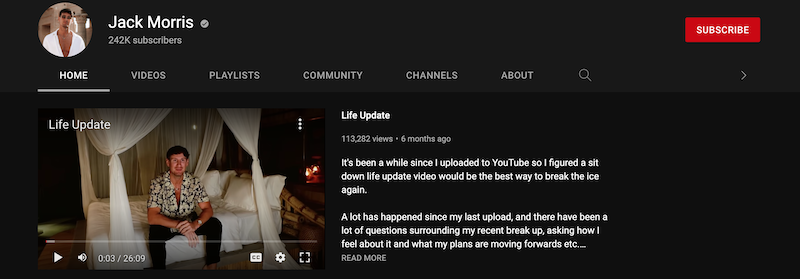
Instagrammers
On Instagram, we find Instagrammers. Their media: photos and a growing use of videos.
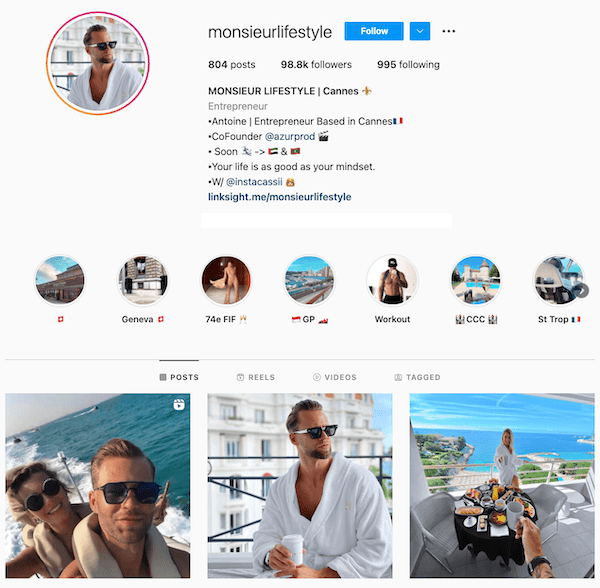
Bloggers
As soon as an influencer has a blog and makes it their main media, we consider them to be a blogger. They write articles that are often illustrated with their most beautiful photos.
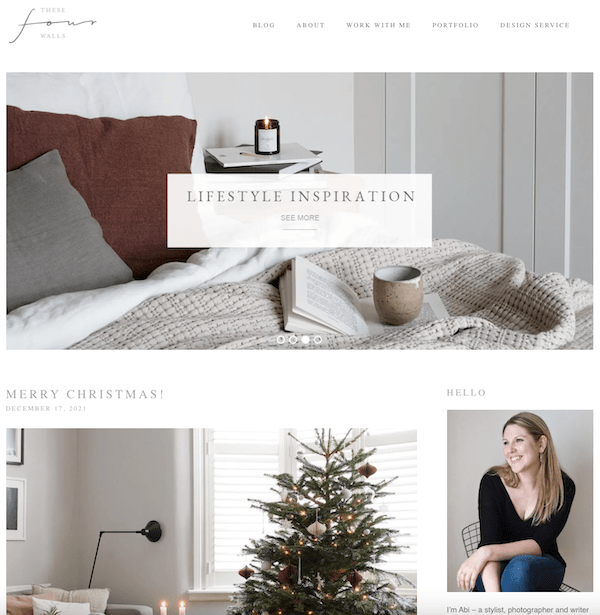
Communities
On Facebook, we can find influencers who lead large communities, especially through the animation of groups or thematic fan pages.
However, we generally don’t get into specific names here. We’d rather talk about community.
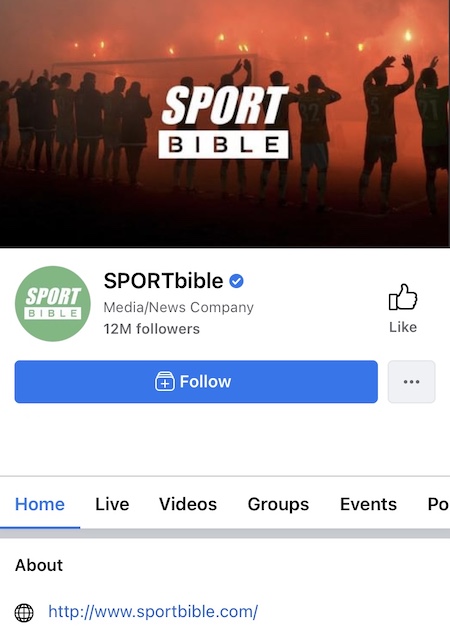
Snapchat influencers
Finally, on Snapchat, we simply talk about influencers. We'll come back to this subject later because this network is especially popular with a very specific category of influencers.
To understand, their job is not to be an “influencer.”
Moreover, if one of them tells you that they’re an influencer, it means that they likely haven’t understood anything about the subject and that they’re probably far from being one. We’ll instead talk about YouTubers, Instagrammers, bloggers...
In addition, the term “influencer” is a name that we want to give them when they have, via their respective social networks, a certain power of influence.
Another preconceived idea: an influencer must have several thousand or even millions of subscribers or followers.
This isn’t true!
There are several categories of influencers, based on their number of followers. Each of these categories has its own specificities. Obviously, the bigger the community, the higher the rates and the less accessible the influencers are.
There are five categories of influencers:
- Mega-influencers, who have more than 1 million followers. Their costs are very high, and they’re very much in demand by brands.
- Macro-influencers, who have between 500,000 and 1 million followers. Their costs are high, and they’re rarely available.
- Mid-tier influencers, who have between 50,000 and 500,000 followers. Their costs and availability can vary greatly.
- Micro-influencers, who have between 10,000 and 50,000 followers. Their costs are low but rising. They remain relatively available but are less and less so.
- Nano influencers, who have less than 10,000 subscribers. Their costs are low or even free, and their availability is high and often voluntary.
As you may have understood, another misconception is to want to bet on the “big” influencers at all costs.
No! You’ll see, later in the article, that you can have an excellent communication strategy with “small influencers.”
You’ll also see that not everything is decided by the number of subscribers...especially since they may have been purchased.
Why are influencers important for promoting your products?
Let’s go back in time if you will...
Remember what communication used to be like.
Access to speech was difficult and expensive. Communication channels were few and far between. Back then, there was only television, radio, or music videos to place your products. What’s more, the cost of such visibility amounted to several tens of thousands of dollars.
During this period, consumers had a passive role. They didn’t have much power over companies. Communication was only top-down, from the company to the customer.
Today, thanks to social media, companies have all the resources they need to communicate and reach a large audience at low cost. On the other hand, customers also have access to the word and have become true consumers. Companies have lost control of their communication.
Communication is still top-down, but it’s also become bottom-up (customers give feedback to companies) and horizontal (between consumers).
It’s to such an extent that today, shoppers no longer trust the advertising messages of brands. They prefer to rely on the opinions of other purchasers, who, by nature, are neutral and devoid of any attempt at influence.

We have thus arrived at the age of recommendations.
And in the era of recommendations, the influencer is king, as we see in the top examples of content marketing.
The idea is to take advantage of the influencer’s audience to communicate about your products.
Influencers give their opinion on your product(s) to a large audience. As we’ve seen before, the prospects they’ll bring back to you are already qualified because they’re convinced by the opinion of the person they’re inspired by and trust.
Convinced?
Hmm...not completely?
Statista reports that the global influencer marketing market is estimated to be worth 13.8 billion USD in 2021 and is only expected to continue growing.
Internet users, now very well educated in web and marketing trends, are aware that an influencer may have resorted to sponsorship and be paid a certain amount to talk about a product. As a result, the influencer’s opinion can be affected by the remuneration they received. The “big” influencers have thus already lost their authenticity.
As you’ll see later in this article, measures have been taken to overcome this drawback.
Anyway, you can now rely on the “small influencers” to place your products. These are the micro-influencers we mentioned earlier. They have a smaller community but are more accessible and have growing power.
However, here’s the thing...there are thousands of them. How do you find the best influencers to place your product?
How do you find influencers?
There are several ways to find influencers.
The most classic method consists of keeping an active watch on various networks, especially on Instagram, YouTube, and Twitter, where influencers are the most active, based on your sector of activity.
This is a daily job, but I suggest that you take some time to do it. You’ll see in the next section that it’s going to greatly facilitate your marketing communication operation.
Before going any further, I must warn you.
Not everyone is an influencer.
And the size of the community means nothing.
You can be attracted to an Instagrammer with thousands of followers.
However, who says that they didn’t buy their followers?
Beware that, yes, buying fans, likes, and comments is commonplace in the influencer community. Everything can be bought, even the number of views on YouTube, for instance...
These imposters won’t bring you anything at all because they have a community that isn’t at all engaged, often based abroad, and that doesn’t see their posts, doesn’t comment on them and finally, doesn’t click.
As they say, it’s better to have 100 engaged fans than 1,000 who don’t see your posts.
How do you detect fake influencers?
First of all, check their profile at a glance. An influencer has 100,000 followers but only 150 likes and very few comments on their posts?
There’s a good chance that they’re an impostor.
The same goes if they have a majority of comments written in foreign languages.
This is the first thing you should do to detect so-called “fake influencers.”
However, you can (and should!) go further with marketing tools specialized in influencer research. These tools analyze in detail the profile of the influencer and provide you with several criteria about their community such as
- age range
- the city and/or the country
- the language
You’ll also know their real engagement rate, i.e., the number of likes and relevant comments on their posts.
I have three tools in mind that I can recommend to help you in your search for influencers.
Lefty
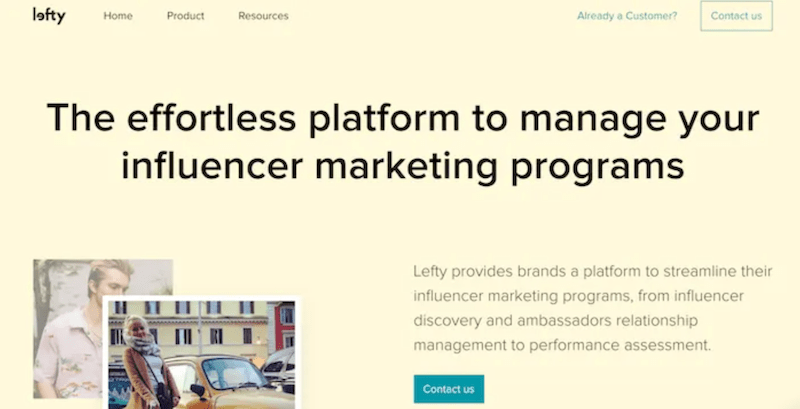
Lefty is a complete influencer marketing solution in three steps:
- Find your influencers: The Lefty search engine allows you to identify relevant influencers for your campaign from over 5 million profiles. You have access to all the account statistics you need to choose your influencers (frequency of posts, average number of likes, most used hashtags...) and their audience (age, gender, geography). These criteria allow you to refine your search for influencers.
- Manage your influencer campaigns directly from the platform. Once your recruitment is complete, contact and exchange with your influencers via the Lefty messaging system.
- Measure the results of your campaign: With Lefty, you have the ability to collect your sponsored content in real time with automated reporting of the indicators defined at the beginning of the campaign. We'll come back to this important aspect of product placement at the end of the article.
Lefty also offers an automation feature. You can organize visibility campaigns in a semi-automated way with a custom seeding program. This is large-scale product placement.
Social Blade
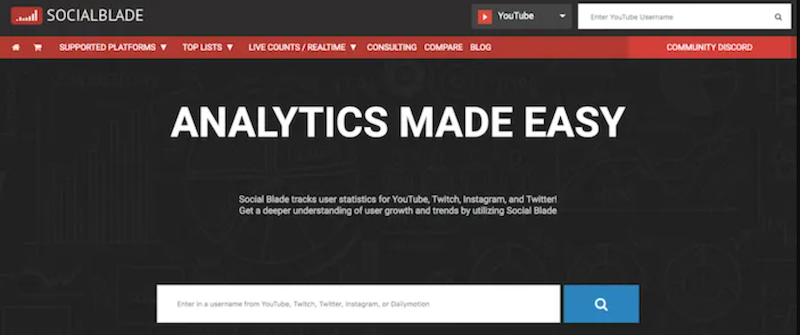
This tool (and the next one) are very useful for detecting “fake influencers.”
When you notice a suspicious activity such as buying fans on a profile, I suggest that you investigate further using these tools.
You’ll then be able to study the quality of the profile of the desired influencer.
Before starting, I’d like to point out that these different tools are complementary. To analyze a profile, don’t limit yourself to one tool. You’ll also see that it’s advisable to conduct the investigation yourself.
Social Blade is a tool that traces the entire history of a social account, especially Instagram. What’s interesting is that you can see the evolution of the number of followers and following (the people that the influencer follows). Lines on graphs allow you to clearly identify dubious strategies of buying fans or mass following/unfollowing.
I’m not presenting you with explanatory illustrations on purpose because you’ll see, a little further on, an influencer himself, who explains the tool and these practices in detail in a YouTube video.
Be careful, if you see a peak in the number of fans on a given day, it does not necessarily mean that the followers have been purchased. Go to the network in question and check if, on that date, the influencer organized a contest or was perhaps identified on an influential account.
On the other hand, a peak of 15,000 followers, for instance, most likely involves the purchase of fans!
HypeAuditor
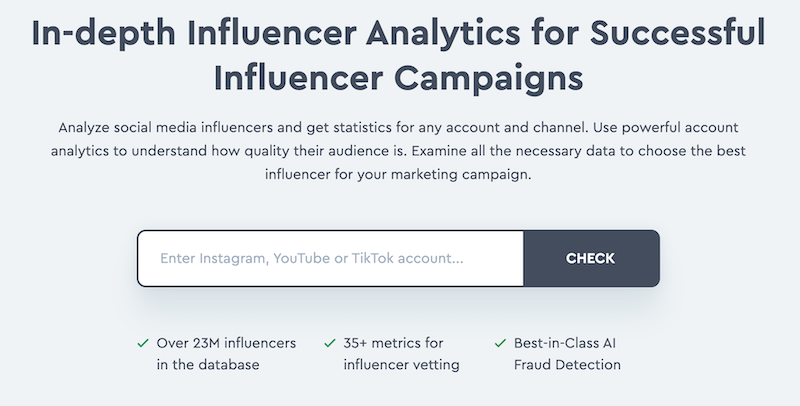
Another tool, HypeAuditor is a real alternative to Social Blade. Once again, the two solutions are complementary.
There’s just one small hitch: HypeAuditor isn’t free.
However, this is justified because the tool is powerful.
HypeAuditor analyzes not only the account of the influencer in question but also those of their subscribers. The tool has the history like Social Blade, but above all, it sees the followers’ accounts to know who they are, where they come from, what language they speak, if they follow a lot of people, if they comment regularly, etc.
All these analyses allow Hype Auditor to indicate a score out of 100 that’s very significant to “rate” the influencer.
To go further, HypeAuditor analyzes the distribution of followers by country, by spoken language, by center of interest. In addition, the tool also analyzes if the followers are
- real people
- influencers followed by more than 5,000 people
- mass followers, i.e., accounts that follow thousands of other accounts. These people do not see the accounts in their Instagram feed. They have no interest because they don’t like the posts.
- suspicious accounts
HypeAuditor also gives a hint about the engagement generated by the influencer and places it in relation to the average of profiles that are like that influencer.
Since a picture is worth a thousand words, here’s a video of YouTuber heyDominik, who decided to lift the veil on fake influencers and explains how to detect them, starting at 3:22 in the video.
How do you develop your brand image with the help of influencer marketing?
Making contact
Once you’ve found the influencers who match your criteria and your offer, you need to get in touch with them and make your proposal.
First of all, you should know that long-term work is a real plus to carry out your product placement plan of action with influencers.
Start by following them on their social networks and react to their publications by liking or commenting, so that they already spot you. This way, you start to create a real relationship with them, and when you want to offer them a partnership, they’ll be more inclined to respond and accept your offer.
In the same way, you can also participate in events where they’re present in order to meet and talk with them. If the meeting’s a positive experience for the influencer, they’ll test and promote your products with pleasure.
Once you want to send them your products to be featured in their publications, avoid sending them private messages on social networks. Your proposal might get lost in the mass of messages received. Furthermore, it doesn’t look very professional either.
So prioritize email.
In your email, respect these guidelines:
- Personalize your email: avoid mass mailing. Influencers aren’t journalists. Send them a simple press release, and it’ll end up in the trash in no time.
The same goes if the influencer realizes that they’re a blind copy of the email. Everybody likes to feel special, and influencers are certainly no exception. Show them that you’re writing to them personally and to no one else. A blind copy in your email and the negotiation is lost.
- Show the influencer that you aren’t writing to them randomly: you know them, you love what they offer, and you’ve particularly appreciated this or that publication.
- Make them an interesting proposal that corresponds to their expectations and those of their community. If you propose that a car/bike blogger tests makeup, you may miss your target. This example is exaggerated, but it also applies to other subjects. For instance, if you offer a meat restaurant test to a vegan blogger, that probably won’t go over very well either.
- Ask them about their budget. This is, in my opinion, the best approach to talk about compensation. Bloggers don’t pay their rent with t-shirts and makeup. They’re also becoming more and more demanding.
Brands, on their side, are becoming increasingly aware of the need to pay bloggers. As a result, they’ll prefer to focus on these paid partnerships and sponsorships. So instead of giving them your budget and maybe spending more money than you should have, ask them what their rates are. They’ll definitely be interested in your email.
The proposal
In this section, we’ll see what the different forms of partnerships are and how you can place your products on each platform. Of course, there are many ways to proceed: photos, videos, stories, unboxing, reviews...
Above all, we’ll ask the question of the average budget, while keeping in mind that this particularity is actually pretty random based on each influencer.
Anyway, I advise you to establish a precise brief to submit to influencers to frame the marketing operation with the expected publication formats, key dates, budget, etc.
- Product placement on Instagram
Instagram is the favorite network for influencers since it has more than 600 million active users. Most of these influencers are known for their creativity.
They put effort into their publications, maintain a “feed” in a style that corresponds to them and that truly inspires the people who follow them. This explains the loyalty of the community.
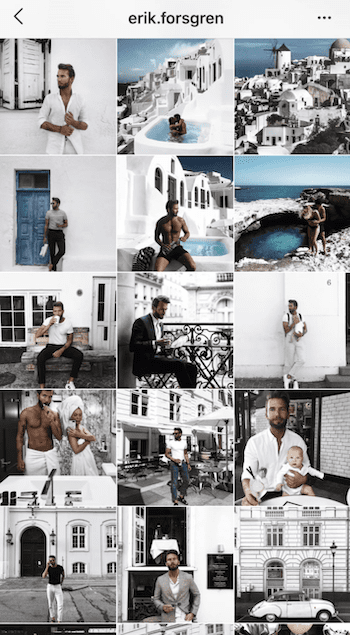
Example of a feed created by influencer @erik.forsgren
On Instagram, influencers essentially publish photos or videos in three different spaces.
- Feed: publications composed of photos or videos of 60 seconds maximum, accompanied by a caption in which it’s possible to insert hashtags and “tag” the brand to identify it and make it gain notoriety on the network. However, it’s not possible to integrate a link to external content. To remedy this, influencers use the mention #Linkinbio and add the link in their biography, in the header of their profile.
- Stories: a succession of ephemeral content that disappears after 24 hours. However, users have the ability to select the stories they want to highlight for an indefinite period, just below their biography. In stories, videos are limited to 15 seconds. Stories allow instantaneity, the ability to go into detail by addressing their community directly and above all, the option for the influencer to add a link to your online store if they have more than 10,000 subscribers and if their account is in professional mode. The subscribers just have to drag the content up to access the link. This is the famous “Swipe Up.” Efficient!
- IGTV: new video platform on Instagram with a special format: vertical and 60 minutes maximum.
As an indication, the average cost of a sponsored post for an influencer with 100,000 followers on Instagram is between 900 and 1,700 USD.
E-merchants who’ve created their online store with WiziShop have access to a complete and free video training regarding product placement on Instagram.
- Product placement on YouTube
YouTube also gathers a large number of influencers: the YouTubers.
So many people around the world watch YouTube daily that the network has become the second most used search engine after Google.
You have everything to gain by exposing your products in influencers’ YouTube videos.
YouTubers are known to have particularly devoted and animated communities. The relationship is much stronger with an individual who we see and hear on videos of several minutes rather than with photos.
It’s quite possible to associate a link to YouTube video content. Influencers usually include it in the description of the video.
On YouTube, creativity can be infinite. Influencers have the ability to offer brands a qualitative campaign with videos, in a particular setting, with a certain staging, etc.
In terms of budget, a product placement in a YouTuber’s video that reaches 10,000 views costs between 450 and 1,400 USD. Of course, it depends on the duration of the placement.
Is it a dedicated video? Very creative? Or a simple mention of a few seconds?
- Product placement on Facebook
Again, Facebook, being the second most visited website in the world, is a particularly effective and safe advertising space for your products.
Influencers are able to generate thousands of reactions, through a fan page or a forum-type group; this second space being more popular in the web and technology fields.
Multiple types of content can be published on Facebook: photos, videos, statuses, polls, events... And each of them can contain links.
It’s the ideal social network to create traffic to your website.
The only problem is that the evolution of the Facebook algorithm has limited the reach of publications. Today, without an allocated advertising budget, many posts are unfortunately rarely seen or not seen at all!
The marketing operations linked to Facebook product placement become much less interesting. This explains the presence of many sponsored posts on Facebook.
Unfortunately, the same is true for Instagram.
For your information, it’s necessary to consider, on average, between 350 and 900 USD for a product placement with an influencer who has more than 100,000 Facebook fans.
- Product placement on Snapchat
Very different from the rest of the social media universe,
Snapchat is particularly effective in reaching a young audience. This one works very much like Instagram Stories.
Moreover, since Instagram introduced Stories on its platform, Snapchat has lost notoriety. However, it still remains very popular with users all over the world.
This network is also distinguished by the proximity offered. In their stories, influencers interact in a more intimate way with the members of their community.On Snapchat, the publications are all short lived. This may have been a drawback at first, but this specificity has actually created a fear of missing content on the part of users. As a result, they spend much more time on it.
As an indication, the remuneration for an advertising campaign of 10,000 views on Snapchat, amounts to between 350 and 800 USD.
Product placement for small budgets
This notion of budget reminds me to once again warn you to not neglect the “small influencers.”
Most mega- and macro-influencers are represented by media agencies or advertising agencies, which implies a sponsorship that’s more or less high.
More available, small influencers may even be willing to share your products on their various networks.
You can thus make real savings.
They’ll always offer good visibility for your products and allow you to develop your reputation and your brand image.
Moreover, they’ll probably be more willing to write an article on their blog. And this will always create a qualified link to your ecommerce store to boost your SEO!
Regulations for product placement on social networks
As I told you above, the “big” influencers have already lost their power of authenticity because educated internet users know that they’ve probably been paid to talk about a product or service.
In the US, to avoid misleading consumers, the Federal Trade Commission has required brands to report their partnerships since 2017.
In France, the ARPP (Autorité de Régulation Professionnelle de la Publicité) warns fraudulent influencers who don’t clearly indicate that their publication is sponsored.
Quite simply, influencers can (and should) mention that it’s a paid partnership through a hashtag like #ad or #sponsored. And you should encourage them to do so to protect yourself.
Instagram has even developed a feature that’s begun rolling out.
Influencers on the network can now make it very clear that their post is the result of a paid partnership with a particular brand. When this is the case, the statistics of the publication are shared with the brand.
This comes in handy when analyzing the performance of your ecommerce advertising and marketing operation.
How do you analyze the results of your promotional campaign?
As for any marketing operation on social media for your ecommerce business, it’s quite difficult to analyze the performance of a product placement campaign with influencers.
And yet, you need to analyze the returns of your advertising investments.
Here are some key performance indicators that can help you analyze the performance of your operation with influencers:
- Traffic progression on your website: if influencers have posted a link to your online store, the number of visits should increase significantly.
- Number of sales: to go further, you can even offer influencers a promo code to give to their community. This way, you can easily count the number of sales generated by their posts.
- Increase in followers: since influencers identify you on their publications, you gain visibility on the different networks and naturally increase your number of followers.
Conclusion: Entrepreneur, you have the soul of an influencer!
I wanted to conclude this article with a very interesting observation for your online business.
You have everything to gain when you yourself are an influencer.
Yes, you! Entrepreneur, founder of your own online store...
Let’s take a look at three examples...
Guillaume Gibault and Le Slip Français
Guillaume is a prominent and influential French entrepreneur.

Guillaume Gibault, Le Slip Français
It’s so much that he’s in demand everywhere. You can see him on all the TV channels, in the newspapers. He’s even become a columnist on C8 and Europe 1 on the subjects of “Made in France” and startups.
In recent months, the brand has launched a series of videos entitled “J’y vais…mais j’ai peur !” (“I'm going...but I’m afraid!”) on its YouTube channel.
Guillaume gets on stage and presents his advice, his tips that made his company successful to help entrepreneurs launch and grow.
The brands and companies that are likely to attract him even send him some products so that he can offer them visibility in his various publications.
However, let’s think about it...what could be better than to have such visibility in the media to place his own products? It’s enough that Guillaume dresses in Slip Français from head to toe during his various television appearances to make a product placement much more effective.
Audrey Lieutaud and MonPetitBikini

Audrey Lieutaud, MonPetitBikini
It’s by collaborating with the blogger Noholita and by posting herself alongside her that Audrey has, herself, gained notoriety on social networks, beyond the visibility offered to her brand.
Since then, Audrey has become ultra active and followed on her blog and her Instagram account.
She presents her daily life as a “Girl Boss,” which she combines with her role as a young mother.
Again, it’s very easy for Audrey to talk about and present her new swimwear models when she posts a picture of herself at the beach or simply when she shows up in her company’s office. And it’s free visibility to boot!
One is never better served than by oneself!
Ines Duhard and Hoanui
Finally, I think of Ines Duhard, blogger and influencer on social networks.
She created her online store Hoanui with our ecommerce solution WiziShop.
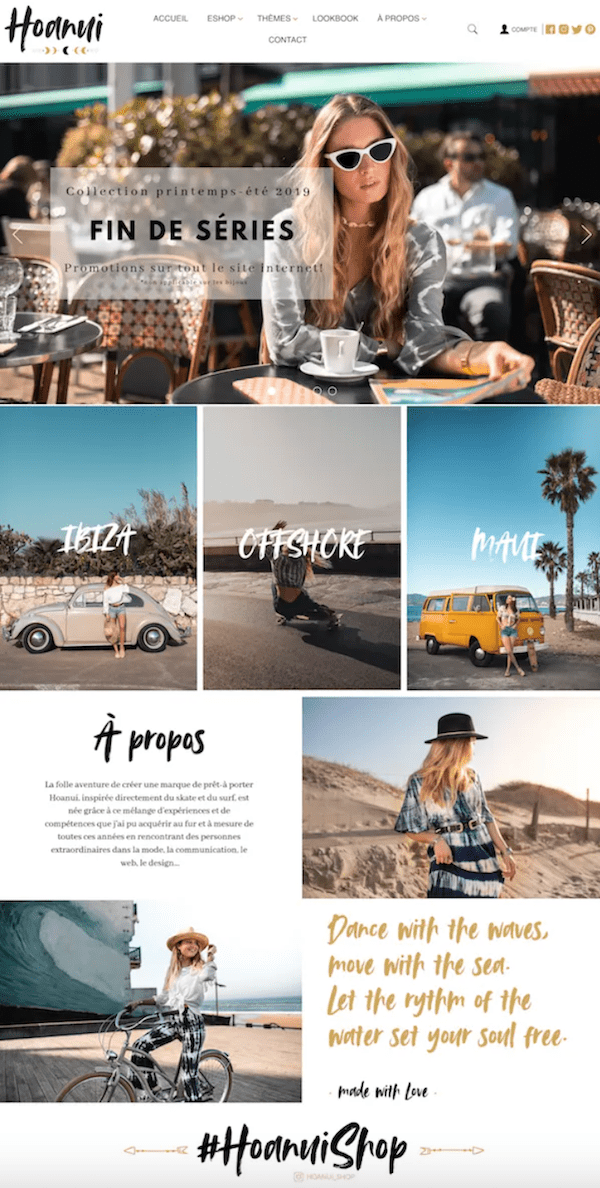
Hoanui online store with WiziShop
Thanks to her notoriety, her store quickly became a hit!
So you know what you have to do…Besides checking out the rest of our ecommerce tips, start working on your personal branding right now to become influential on social networks and make successful product placements, at low cost!
Good luck to all!


